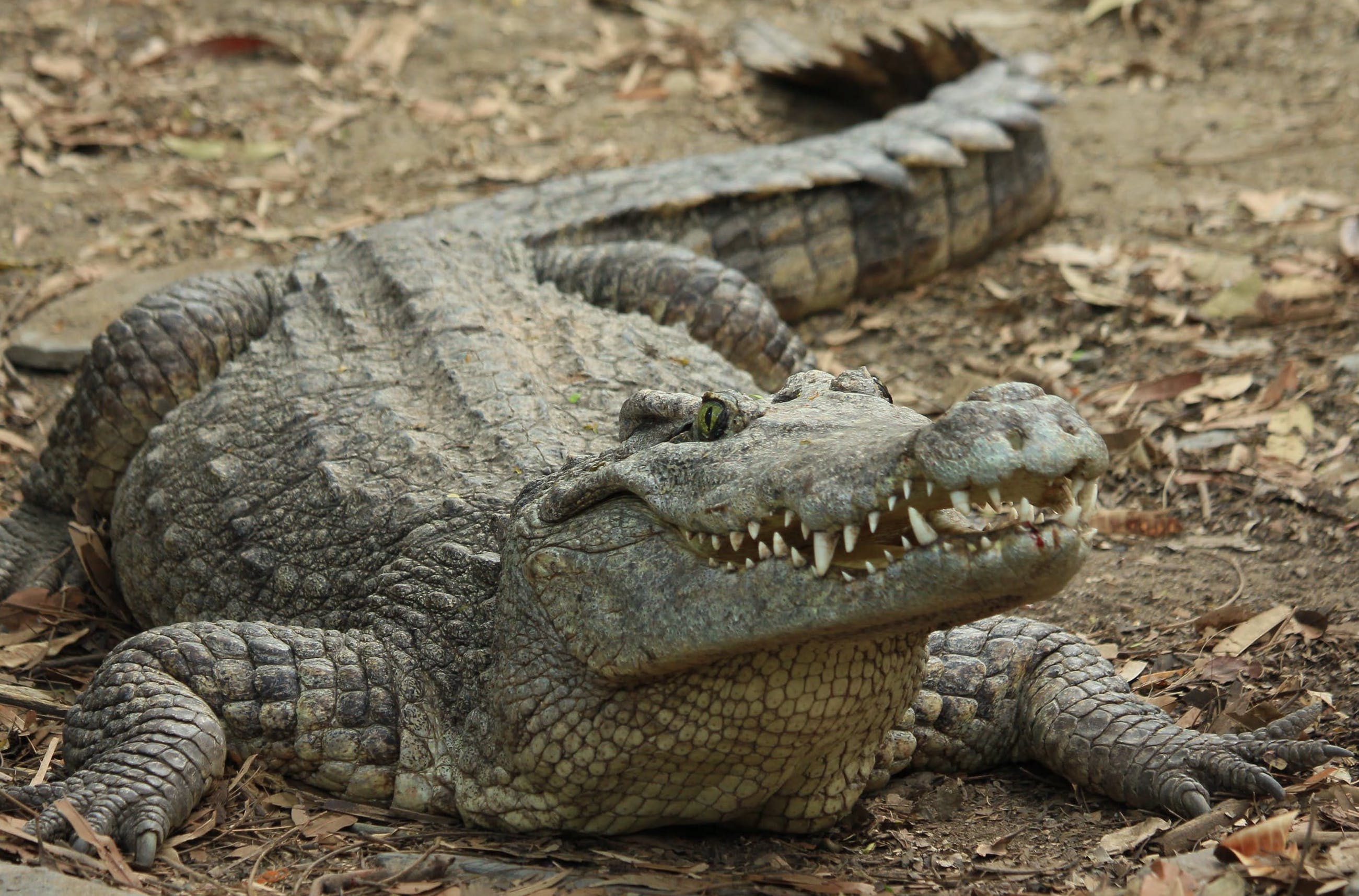Embargoed until Wednesday 24 March 2021 at 00.01hrs [UK time] or 8pm [US Eastern Time] on Tuesday 23 March 2021
Modern crocodiles are predators living in rivers, lakes and wetlands, grabbing fish, reptiles, birds and mammals with their conspicuous snouts and powerful jaws.
However, new research published today in the journal Proceedings of the Royal Society B, shows that ancient crocodiles were once much more varied because of rapid evolution.
In the time of the dinosaurs, some crocodiles experimented with dolphin-like adaptations to living in the oceans, and others lived on land as fast-moving plant-eaters.
The researchers studied over 200 skulls and jaws, including fossils from the entire 230-million-year history of crocodiles and their extinct relatives. They explored shape variation to reveal differences between species and analysed how fast crocodile groups changed through time.
It turns out that some extinct crocodile groups, including dolphin-like thalattosuchians and small land-dwelling notosuchians, evolved very fast over many millions of years, and they underwent great changes to their skulls and jaws as they expanded into niches today occupied by other animal groups, particularly mammals.
The research also shows that crocodiles, alligators and gharials, the only living crocodilians, are more conservative than these extinct fossil groups, and evolved steadily for the last 80 million years, but there is no evidence for a slow-down in their evolution and they are not ‘living fossils’, as once thought.
Lead author Dr Tom Stubbs, a Senior Research Associate at the University of Bristol’s School of Earth Sciences, said: “Crocodiles and their ancestors are an incredible group for understanding the rise and fall of biodiversity.
“There are only 26 crocodile species around today, most of which look very similar. However, there are hundreds of fossil species with spectacular variation, particularly in their feeding apparatus.”
Dr Armin Elsler, a Research Associate in the Bristol School of Earth Sciences and co-author, added: “New state-of-the-art methods now mean we can test for differences in the speed of evolution through time and across groups.”
It has long been suggested that dramatic shifts in habitat and diet can trigger rapid evolution, but these patterns are usually only reported in groups with great variety today, like birds, mammals and fish. This is the first time this trend has been shown in crocodiles, a group with a rich fossil history, but low modern diversity.
Dr Stephanie Pierce, Associate Professor of Organismic and Evolution Biology at Harvard University, said: “Ancient crocodiles came in a dizzyingly array of forms. They were adapted to running on land, swimming in the water, snapping fish, and even chewing plants.
“Our study shows that these very different ways of living evolved incredibly fast, allowing extinct crocodiles to rapidly thrive and dominate novel ecological niches over many millions of years.”
Professor Michael Benton from Bristol added: “It’s not clear why modern crocodiles are so limited in their adaptations. If we only had the living species, we might argue they are limited in their modes of life by being cold-blooded or because of their anatomy.
“However, the fossil record shows their amazing capabilities, including large numbers of species in the oceans and on land. Perhaps they only did well when world climates were warmer than today.”
Paper:
‘Ecological opportunity and the rise and fall of crocodylomorph evolutionary innovation’ by T. Stubbs, S. Pierce, A. Elsler, P. Anderson, E. Rayfield and M. Benton in Proceedings of the Royal Society B: Biological Sciences
Link to paper when live: https://doi.org/10.1098/rspb.2021.0069
Images:
IMAGE 1 – Modern crocodile. Photograph by Rutpratheep Nilpechr
https://fluff.bris.ac.uk/fluff/u2/rc16966/s_mQe_hMWz10gm_9g2cOwQzx5/
IMAGE 2 – Fossil land-dwelling crocodiles from the Cretaceous. Notosuchians had diverse diets, including insect-eating and plant-eating. Credit: Daniel Martins dos Santos.
https://fluff.bris.ac.uk/fluff/u3/rc16966/CfDjcXz_LieN2tj4JgzHDAzxZ/
IMAGE 3 – Extinct ocean-going crocodile from the Jurassic. Credit: wikimedia commons user Ghedoghedo.
https://fluff.bris.ac.uk/fluff/u2/rc16966/Ex9LXiTIj_2mNO3phVYUoQzx1/


